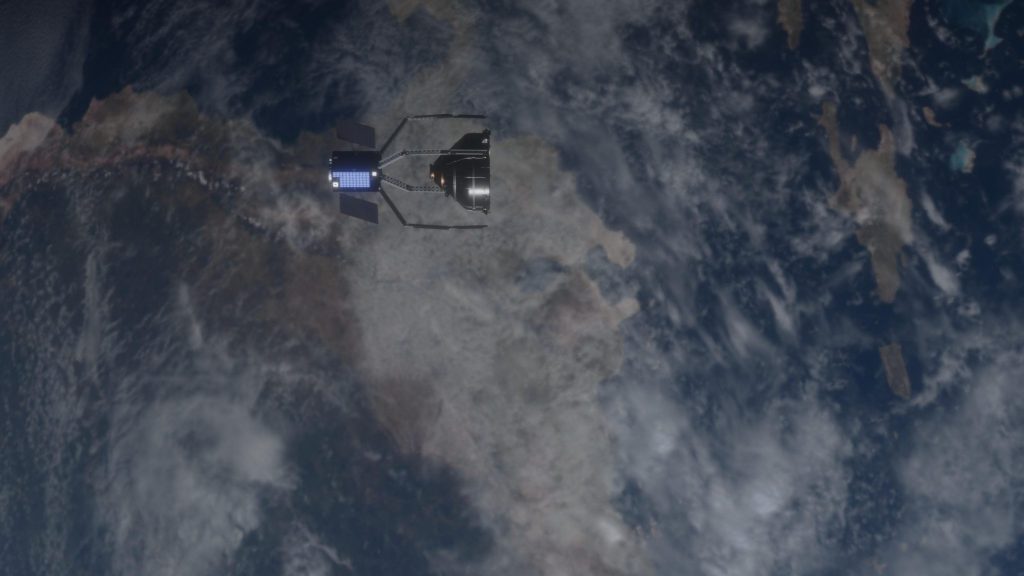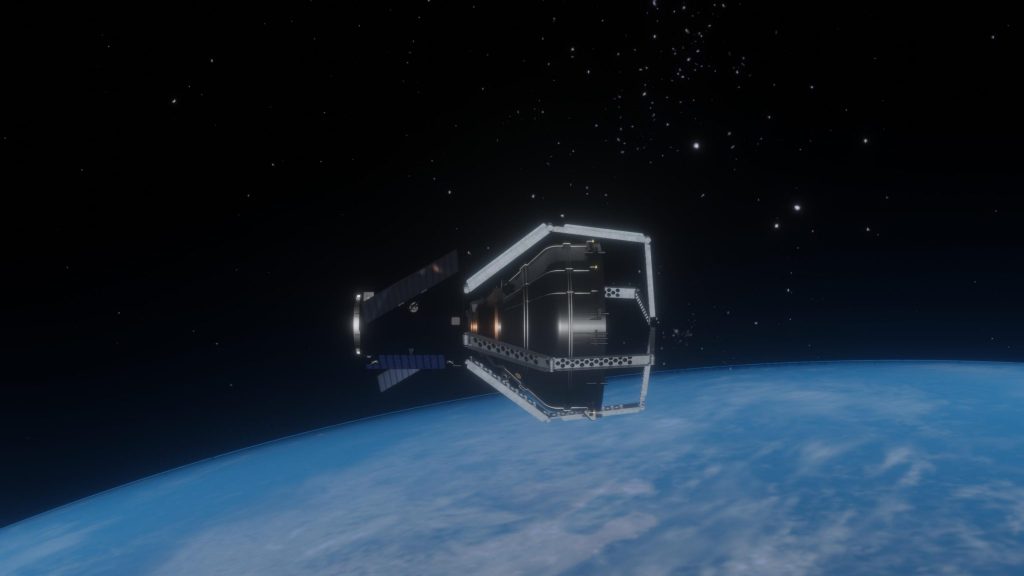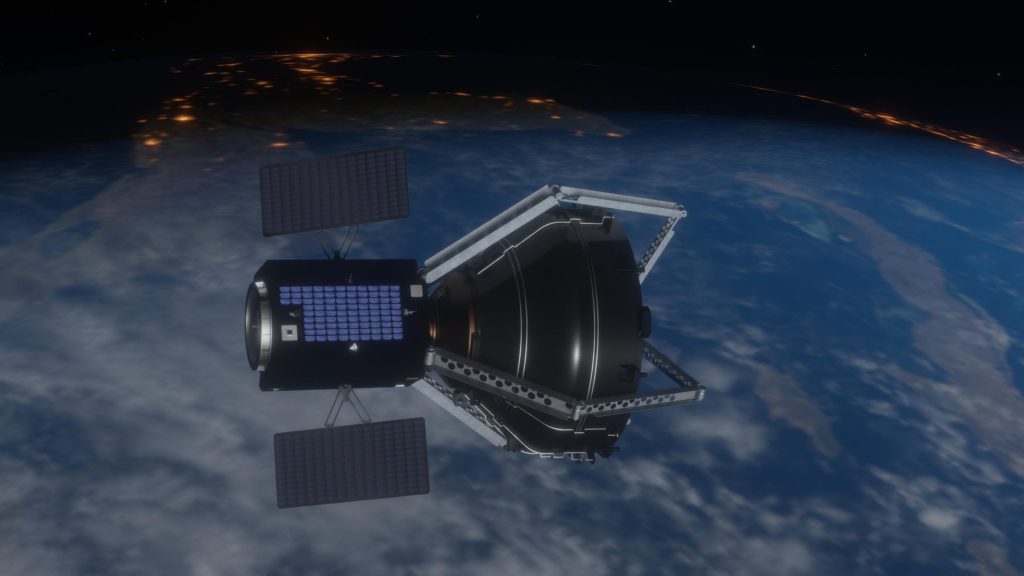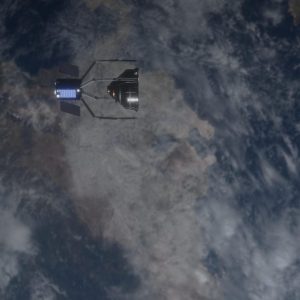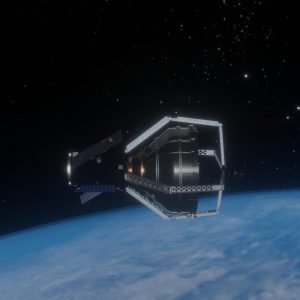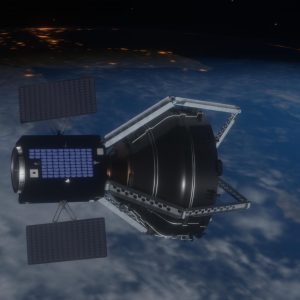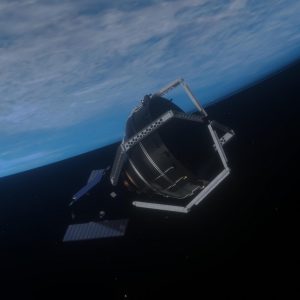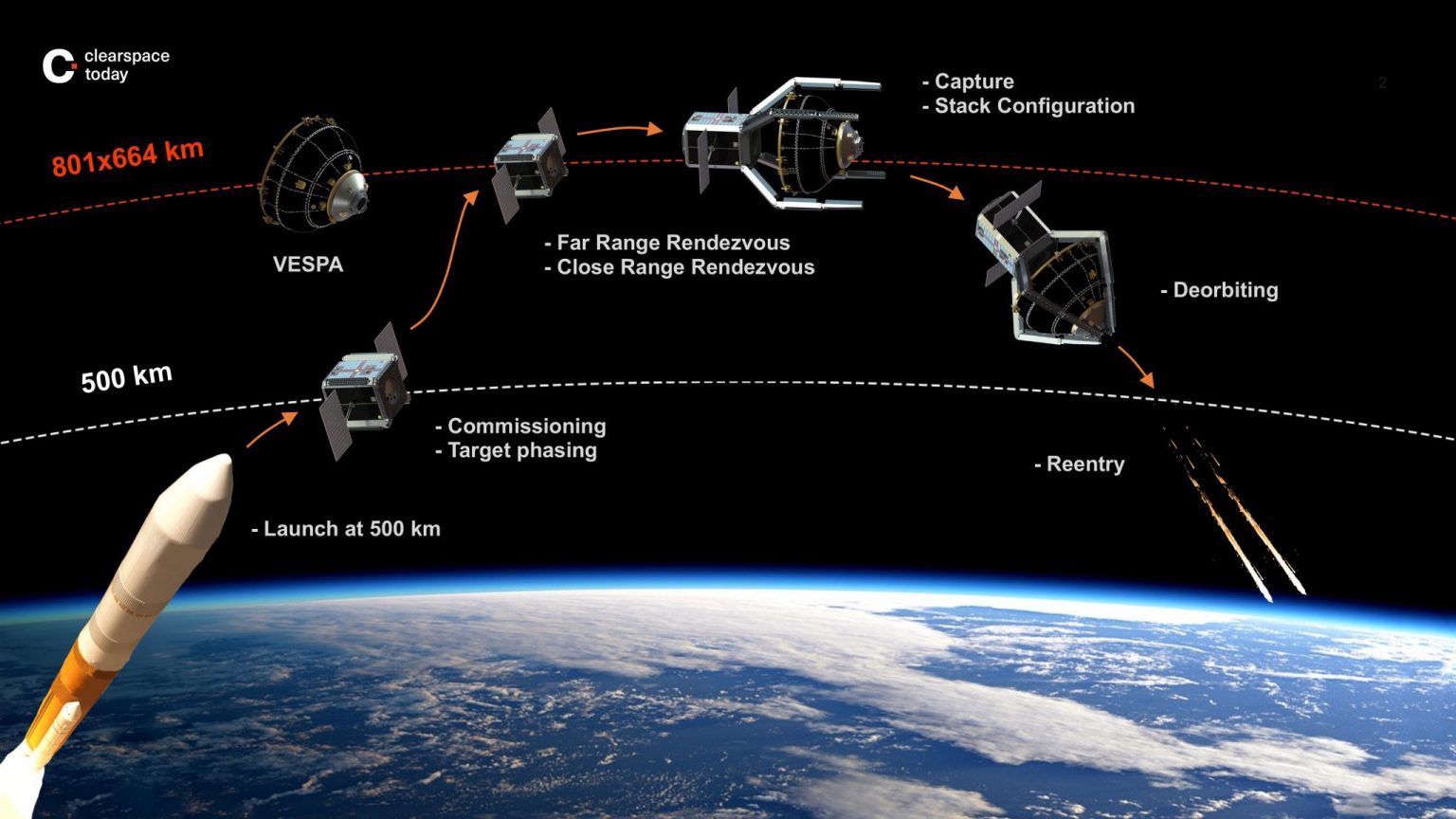
The European Union has allocated €86 million to a project designed to capture and remove a piece of space debris weighing 120kg, which has been in orbit around the Earth since 2013. The startup ClearSpace, working from the EPFL Innovation Park, will seek private funds to raise the total to €100 million.
Space debris has become a major hazard, with more than 34,000 objects greater than 10cm currently in orbit. A fleck of paint, travelling at speeds of up to 34,500km/h, is enough to make a dent in the International Space Station.
The Vespa Upper Part, a cone-shaped object of 1.8m by 2m, was discarded after the third burn stage of ESA’s Vega flight VV02, and is currently hurtling in orbit at an altitude of between 670 and 810km. ClearSpace and its consortium of research teams, including the Embedded Systems Laboratory, will work to design, launch and deploy a satellite to capture the Vespa Upper Part, before performing a reentry, burning up the target and itself in the atmosphere.
ESL will contribute to the project by optimising the deep learning (DL) algorithms for the computation of the satellite’s relative position and altitude.
DL algorithms exert high computational demands, and can easily overwhelm the computational capabilities of a System-on-Chip (SoC). This project is confronted by a range of key challenges:
- the bandwidth available between the memory and the processing elements
- the limited energy budget of these embedded processing systems
- fluctuating temperatures between extremes of hot and cold
There are therefore two fundamental aspects to which ESL will contribute. Firstly, the design of the ultra-low power embedded SoC computing architecture, which will include ARM CPU processors and hardware accelerators mapped on field-programmable gate array (FPGA) platforms.
Secondly, ESL will optimise the initial DL code to maximise the use of this heterogeneous platform, comprising a number of processors and custom-made accelerators on FPGA.
